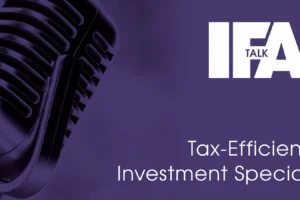Written by Daniel Casali, Chief Investment Strategist, Evelyn Partners
President Donald Trump’s “America First” policies have prompted Europe to boost defence and infrastructure spending. These include Germany’s fiscal reforms and the European Union’s (EU’s) ReArm Europe initiative, both of which should help to stimulate growth. But challenges like aging societies and a tech gap compared to the US (i.e. lagging technology investment and a lower digital adoption rate) have held back growth. Nevertheless, European equities have rallied this year and show resilience amid a reshaping of the continent’s relationship with the US.
European plan to spend more money
Following the Japanese air strike on Pearl Harbour in December 1941, Admiral Isoroku Yamamoto is reported to have used the phrase “all we have done is awaken a sleeping giant.” Not surprisingly, US war production kicked in soon after and industrial production surged to a 14% annualised growth rate (on average) until the end of World War II, compared to a long-term average of around 3%.
Thankfully, there are no direct military conflicts between major powers today. However, President Donald Trump’s “America First” agenda is stretching relations with foreign governments. Take Europe, where the Trump administration has threatened to impose a 200% US tariff on French champagne, wines and other European spirits, following actual tariff hikes on steel and aluminium.
American isolationism has also meant a withdrawal of defence funding, military equipment and intelligence (briefly) for Ukraine. Leaders in Europe have now woken up to what a second Trump term means for their economies and security.
A fiscal shift in Europe is underway
In response to Trump’s policies, European governments are planning to boost fiscal spending on infrastructure and defence. Once it is officially formed, the next German centre-right coalition government intends to reform the so-called ‘debt brake’, which has previously limited the nation’s ability to incur new debt. These changes include:
- A €500 billion special purpose vehicle for infrastructure investment;
- A debt brake exemption for defence spending above 1% of gross domestic product (GDP); and
- Allowing the Länder (individual states) to increase their borrowing cap to 0.35% of GDP from a balanced budget, to match the federal level.
This represents a major fiscal overhaul, arguably matching the scale and speed of German reunification—a political and economic turning point in the country’s history.
Crucially, Germany has the capacity to borrow, as its public debt is relatively low at 62% of GDP in 2024.4 This compares favourably to other major European economies, such as France on 113% and Italy on 136%. Even so, unlocking borrowing capacity is not the same thing as fiscal spending. It is not clear how quickly money can be raised or spent.
Fiscal impetus in Berlin is spreading to Brussels. The EU recently launched an initiative called ReArm Europe to enable member states to raise defence expenditure without being subject to EU fines for exceeding budget deficits and debt levels. Essentially, this frees up €800 billion in additional fiscal capacity for member states to spend on infrastructure and defence. Absolute Strategy Research, an independent research provider, calculates that this could mean an additional €640 billon on top of Germany’s fiscal spending boost from reforming the debt brake.
ReArm Europe also provides for a united EU defence policy that should reduce industry fragmentation. Currently, EU member states produce 12 types of battle tanks, compared to one in the US. More joint ventures like the Eurofighter jets project (BAE Systems, Leonardo, and Airbus) could provide solutions. By centralising capital at the EU level, spending on defence can be scaled up more effectively. There is also the possibility that auto plants could be repurposed to focus on weapons production when demand for cars has been sluggish.
However, there are risks that could prevent ReArm Europe becoming an effective industrial policy. First, there will be considerable lead times before mass production and efficiency gains kick in. Second, the EU is still dependent on the US for military hardware: between 2010-2024, 54% of European arms imports came from the US. And third, not all EU member states have the same fiscal space as Germany.
Turning public spending into growth
Fiscal policy plays an important role in driving growth. Eurozone governments have injected €2.5 trillion into the economy through primary deficits (excludes interest costs on public debt) since 2009, or just 18% of what the US government did in that time.10 Eurozone annual real GDP growth averaged just 1%, compared to 2.25% for the US during that period.
Realistically, output growth in Europe appears unlikely to exceed that in the US on a sustainable basis. Europe’s labour productivity, relatively unfavourable demographics and lagging investment in the fast-growing tech sector are lodestones on the continent’s growth outlook.
Though fiscal loosening can help alleviate the sluggish demand side of the economy to narrow the growth premium currently enjoyed by the US. Looking forward, the consensus of economists expects the US economy to grow around one percentage point faster than the EU in 2025 and half a percentage point more in 2026.
Importantly for investors, the probability of a catch-up in European growth has also increased. Member states appear willing to skirt around the EU’s institutional constraints with conservative members, like Germany, able to accept these changes.
Indeed, German Chancellor-in-waiting, Friedrich Merz, deliberately talked about doing “whatever it takes” when outlining his fiscal plans. This drew a deliberate parallel to when European Central Bank (ECB) president Mario Draghi used the same forceful language to end the Eurozone debt crisis in 2012.
If this new European fiscal drive is to work, it will need to lift business and consumer confidence at home to retain capital in the region. The Bundesbank estimates that German firms have invested €1.7 trillion overseas since 2010, with nearly 40% of the total attributed to companies moving production abroad.
Opportunities in European equities
European equities have largely shrugged-off the US trade protectionism risk — the MSCI Europe ex-UK benchmark index has returned 9% so far this year. This has largely been led by a valuation expansion from expectations of fiscal easing, a rotation away from US tech stocks and a potential resolution to the war in Ukraine.
Today, the Europe ex-UK one-year forward price-to-earnings ratio is trading on 16% discount to developed market peers, a sharp improvement from a 33-year low of 24% at the end of last year. Given that the average discount is 10%, there could be room for valuations to further support European stocks.















